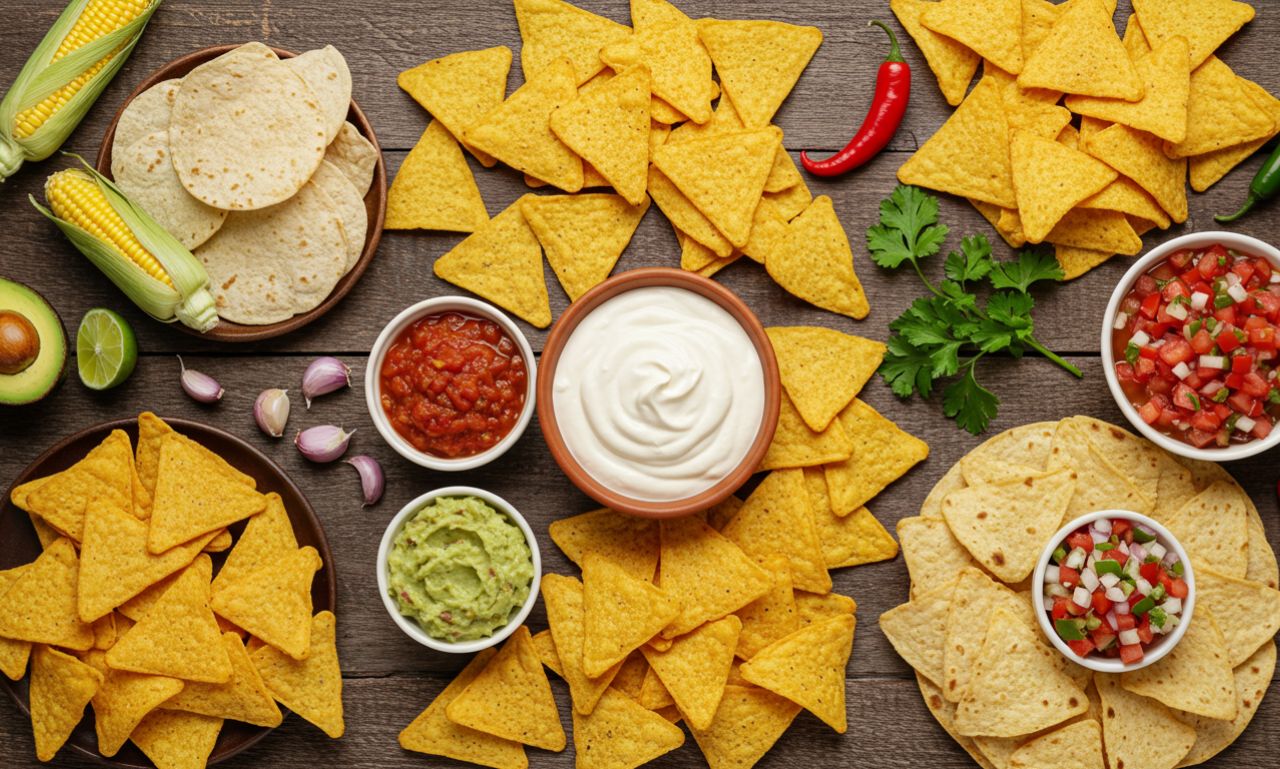Mexican chips are not just a snack; they are a cultural treasure rooted in tradition and innovation. From humble beginnings with tortilla-based chips to today’s wide variety of flavors, Mexican chips have found their way into households across the world. The unique crunch and seasoning set them apart from standard potato chips, making them a staple in both casual snacking and festive occasions.
This article explores the origins, types, flavors, cultural importance, and the growing international demand for Mexican chips. Whether you’re a food enthusiast or a casual snacker, understanding the story behind these crunchy bites reveals why they are cherished by millions.
The Origins of Mexican Chips
The history of Mexican chips begins with the tortilla. Made from corn, tortillas have been part of Mexican cuisine for centuries. The transformation of tortillas into chips occurred when leftover tortillas were fried to avoid waste. This practice quickly gained popularity, leading to the creation of the crunchy snacks we know today.
Tortilla chips became especially famous after being paired with salsa and guacamole. In the mid-20th century, packaged Mexican chips entered markets, spreading beyond Mexico’s borders. Today, they are a global snack phenomenon, recognized for their authentic taste and versatility.
Traditional Types of Mexican Chips
Mexican chips come in several traditional varieties, each with unique flavors and preparation methods:
-
Tortilla Chips – The most iconic type, made from fried or baked corn tortillas, often salted lightly.
-
Totopos – Traditional triangular chips often served with dips like beans, guacamole, or salsa.
-
Chicharrones de Harina – Made from wheat flour, these puffed chips are crispy, airy, and often topped with chili and lime.
-
Plantain Chips – A popular alternative, made from sliced plantains fried until golden, offering a sweet and salty crunch.
Each type carries its own cultural story, representing different regions of Mexico.
The Flavor Explosion of Mexican Chips
Mexican chips are famous for bold flavors. Unlike plain salted chips, they are often seasoned with chili powder, lime, cheese, and even exotic spices. Popular seasoning profiles include:
-
Chili and lime
-
Salsa verde
-
Spicy cheese
-
Barbecue-inspired blends
This adventurous approach to flavoring sets Mexicanchips apart from other snack traditions. They reflect Mexico’s love for spice, zest, and vibrant taste.
Cultural Significance of Mexican Chips
In Mexico, chips are more than a quick snack. They are part of everyday meals, celebrations, and street food culture. Street vendors often sell chips with fresh toppings like lime juice, hot sauce, and shredded cheese. Families serve them at gatherings alongside homemade dips.
Mexican chip also symbolize community. Sharing a bag of chips at a party or adding them to traditional dishes reflects the way food connects people. Their popularity shows how simple ingredients can carry deep cultural meaning.
Mexican Chips in Global Markets
Over the last few decades, Mexican chips have expanded worldwide. International supermarkets now stock popular Mexican chip brands, while local restaurants serve tortilla chips with salsa as a staple appetizer.
The global love for spicy and tangy flavors has helped Mexicanchips gain traction in countries like the United States, Canada, and across Europe. Brands continue to innovate by blending traditional flavors with modern packaging, making them accessible to international audiences.
Health and Nutrition Aspects
Like most snacks, Mexican chips should be enjoyed in moderation. Traditional versions made from corn tortillas can be relatively simple, offering fiber and fewer additives. However, flavored and packaged varieties may include added sodium and oils.
Recently, health-conscious versions of Mexican chip’s have appeared. Options such as baked tortilla chips, whole grain varieties, and plant-based alternatives cater to growing consumer demand for nutritious snacking. This balance allows Mexicanchips to stay relevant in today’s health-focused food landscape.
Pairings and Serving Ideas
Mexican chips shine when paired with dips and toppings. Some classic pairings include:
-
Salsa Roja or Salsa Verde – Adds freshness and heat.
-
Guacamole – Creamy avocado dip balances the crunch.
-
Queso Dip – Melted cheese elevates the flavor.
-
Pico de Gallo – Fresh tomatoes, onions, and cilantro add zest.
Creative cooks also use Mexican ingredients in recipes, such as layered nachos, chip-crusted casseroles, and soups garnished with crumbled chips.
Popular Mexican Chip Brands
Several brands dominate the Mexican market, both locally and internationally. Some household names include:
-
Sabritas – A leader in Mexican snacks, offering diverse chip varieties.
-
Takis – Known for their rolled shape and extremely spicy flavors.
-
Totis – Famous for puffed wheat chips with tangy chili-lime seasoning.
-
Barcel – Offers bold, innovative flavors that cater to younger snack lovers.
These brands keep the tradition alive while constantly reinventing flavors to attract new generations.
Mexican Chips and Modern Food Trends
As global snacking habits evolve, Mexicans continue to adapt. Trends like plant-based diets, gluten-free alternatives, and exotic flavor blends are shaping the industry. Plantain chips and nopal (cactus) chips, for instance, are gaining popularity for their health appeal.
Fusion flavors, such as jalapeño cheddar or mango chili, combine traditional spice with modern tastes. Social media also plays a role in promoting Mexican food, with viral food challenges and snack reviews making it a trendy choice.
The Future of Mexican Chips
The future of Mexican chips looks promising as global demand for authentic, bold flavors continues to grow. With innovations in health-conscious recipes and sustainable packaging, Mexicanchips will likely remain a staple in international snack culture.
Their ability to balance tradition with modern preferences ensures that they will not only survive but thrive in competitive global markets.
Conclusion
Mexican chips are more than just crunchy snacks. They are a symbol of culture, flavor, and innovation. From traditional tortilla chips to globally recognized brands, their journey reflects both Mexico’s culinary heritage and the world’s appetite for bold tastes.
Whether enjoyed with salsa at a family gathering or bought as a packaged treat abroad, Mexicanchips remind us that the best foods often start from simple, authentic roots.

